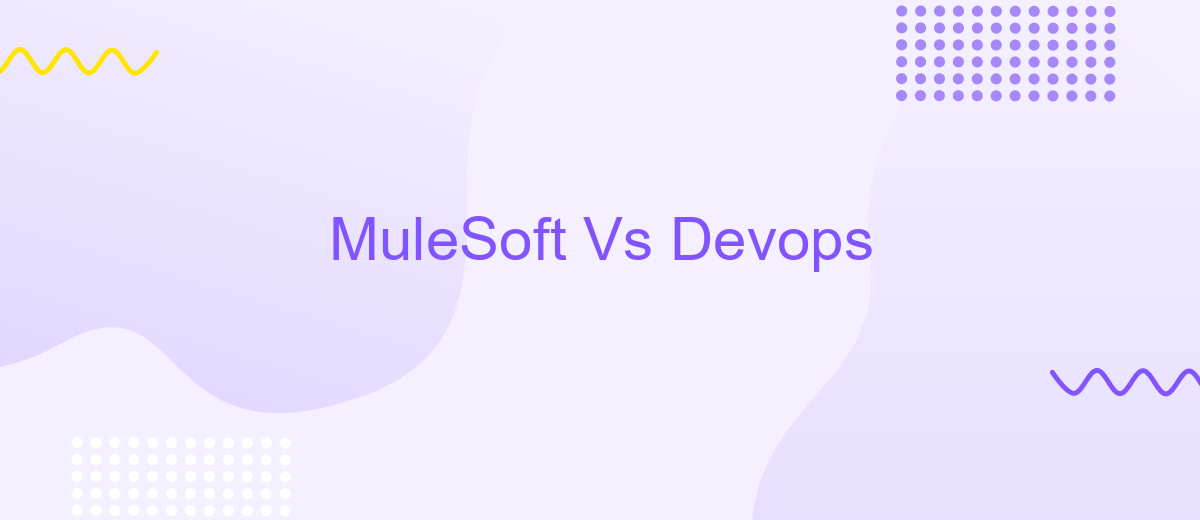MuleSoft Vs Devops
In today's rapidly evolving tech landscape, businesses are constantly seeking efficient ways to streamline operations and enhance productivity. Two prominent methodologies that have gained significant traction are MuleSoft and DevOps. While MuleSoft focuses on integration and API management, DevOps emphasizes collaboration and automation in the software development lifecycle. This article delves into the key differences and synergies between MuleSoft and DevOps.
Introduction
In the rapidly evolving landscape of IT and software development, the need for efficient integration and streamlined operations has never been more critical. MuleSoft and DevOps represent two key approaches to achieving these goals, each with its unique strengths and applications. MuleSoft specializes in API-led connectivity, enabling seamless integration of various systems and applications. In contrast, DevOps focuses on fostering collaboration between development and operations teams to enhance software delivery and infrastructure management.
- MuleSoft: API-led connectivity for seamless system integration.
- DevOps: Enhanced collaboration for improved software delivery.
- ApiX-Drive: Simplifies integration processes with user-friendly automation tools.
Choosing between MuleSoft and DevOps depends on your organization's specific needs and objectives. While MuleSoft excels in creating robust integration solutions, DevOps enhances the overall software lifecycle through continuous integration and deployment. Additionally, services like ApiX-Drive can further simplify integration tasks, making it easier to connect various applications and automate workflows. Understanding the strengths of each approach will help you make an informed decision that aligns with your business goals.
Understanding MuleSoft

MuleSoft is a powerful integration platform that enables organizations to connect applications, data, and devices seamlessly. It provides a comprehensive suite of tools designed to streamline the integration process, allowing businesses to build and manage APIs and integrations with ease. MuleSoft's Anypoint Platform is the core of its offering, providing a unified solution for API management, design, and deployment, ensuring that integrations are efficient and scalable.
One of the key features of MuleSoft is its ability to connect various systems and services, both on-premises and in the cloud. This is particularly beneficial for businesses looking to integrate with third-party services like ApiX-Drive, which facilitates the automation of data flows between different applications. By leveraging MuleSoft's capabilities, organizations can ensure that their integrations are robust, secure, and capable of handling complex workflows, ultimately leading to improved operational efficiency and reduced time to market.
Exploring DevOps

DevOps is a set of practices that combines software development (Dev) and IT operations (Ops) to shorten the development lifecycle and deliver high-quality software continuously. It emphasizes collaboration, automation, and monitoring throughout all stages of the software development lifecycle.
- Continuous Integration (CI): Developers frequently integrate code changes into a shared repository, which triggers automated builds and tests.
- Continuous Delivery (CD): Code changes are automatically prepared for a release to production, ensuring that software can be reliably released at any time.
- Infrastructure as Code (IaC): Managing and provisioning computing infrastructure through machine-readable configuration files.
- Monitoring and Logging: Continuously monitoring and logging applications to identify and resolve issues proactively.
DevOps also leverages tools and services to streamline integration and deployment processes. For instance, ApiX-Drive simplifies the automation of workflows by integrating various applications and services, enabling seamless data transfer and synchronization. This enhances the efficiency and reliability of the software development process, making it easier to manage complex integrations and maintain continuous delivery pipelines.
Comparing MuleSoft and DevOps

MuleSoft and DevOps serve different yet complementary roles in modern IT environments. MuleSoft is primarily focused on integration, allowing various systems and applications to communicate seamlessly. It offers tools to connect data, applications, and devices across on-premises and cloud environments. On the other hand, DevOps is a set of practices aimed at automating and integrating the processes between software development and IT teams, enabling continuous delivery and deployment.
While MuleSoft streamlines integration, DevOps enhances the efficiency of development and operations. Both can work together to improve overall productivity and agility. For instance, MuleSoft can be used to integrate various services and APIs, while DevOps practices ensure that these integrations are deployed and managed efficiently.
- MuleSoft focuses on integration and API management.
- DevOps emphasizes automation, continuous delivery, and collaboration.
- Both aim to enhance operational efficiency and agility.
Using a service like ApiX-Drive can further simplify the integration process, making it easier to connect and automate workflows between different applications. By leveraging both MuleSoft and DevOps practices, organizations can achieve a more streamlined and efficient IT environment.
Conclusion
In summary, both MuleSoft and DevOps offer unique advantages for organizations looking to optimize their software development and integration processes. MuleSoft excels in providing a robust platform for API management and integration, making it an excellent choice for businesses that need to connect disparate systems and streamline their operations. On the other hand, DevOps focuses on enhancing the collaboration between development and operations teams, fostering a culture of continuous improvement and automation.
Ultimately, the choice between MuleSoft and DevOps depends on your organization's specific needs and goals. If your primary objective is to manage and integrate APIs efficiently, MuleSoft is a strong contender. However, if you aim to improve overall software delivery and operational efficiency, implementing DevOps practices could be more beneficial. For those looking to combine the strengths of both, leveraging tools like ApiX-Drive can further enhance your integration capabilities, providing seamless connectivity between various applications and services.
- Automate the work of an online store or landing
- Empower through integration
- Don't spend money on programmers and integrators
- Save time by automating routine tasks
FAQ
What is the primary focus of MuleSoft compared to DevOps?
Can MuleSoft be used in a DevOps environment?
How do MuleSoft and DevOps contribute to business agility?
What are some common tools used in DevOps that can complement MuleSoft?
How can businesses automate integrations and workflows effectively?
Strive to take your business to the next level, achieve your goals faster and more efficiently? Apix-Drive is your reliable assistant for these tasks. An online service and application connector will help you automate key business processes and get rid of the routine. You and your employees will free up time for important core tasks. Try Apix-Drive features for free to see the effectiveness of the online connector for yourself.


